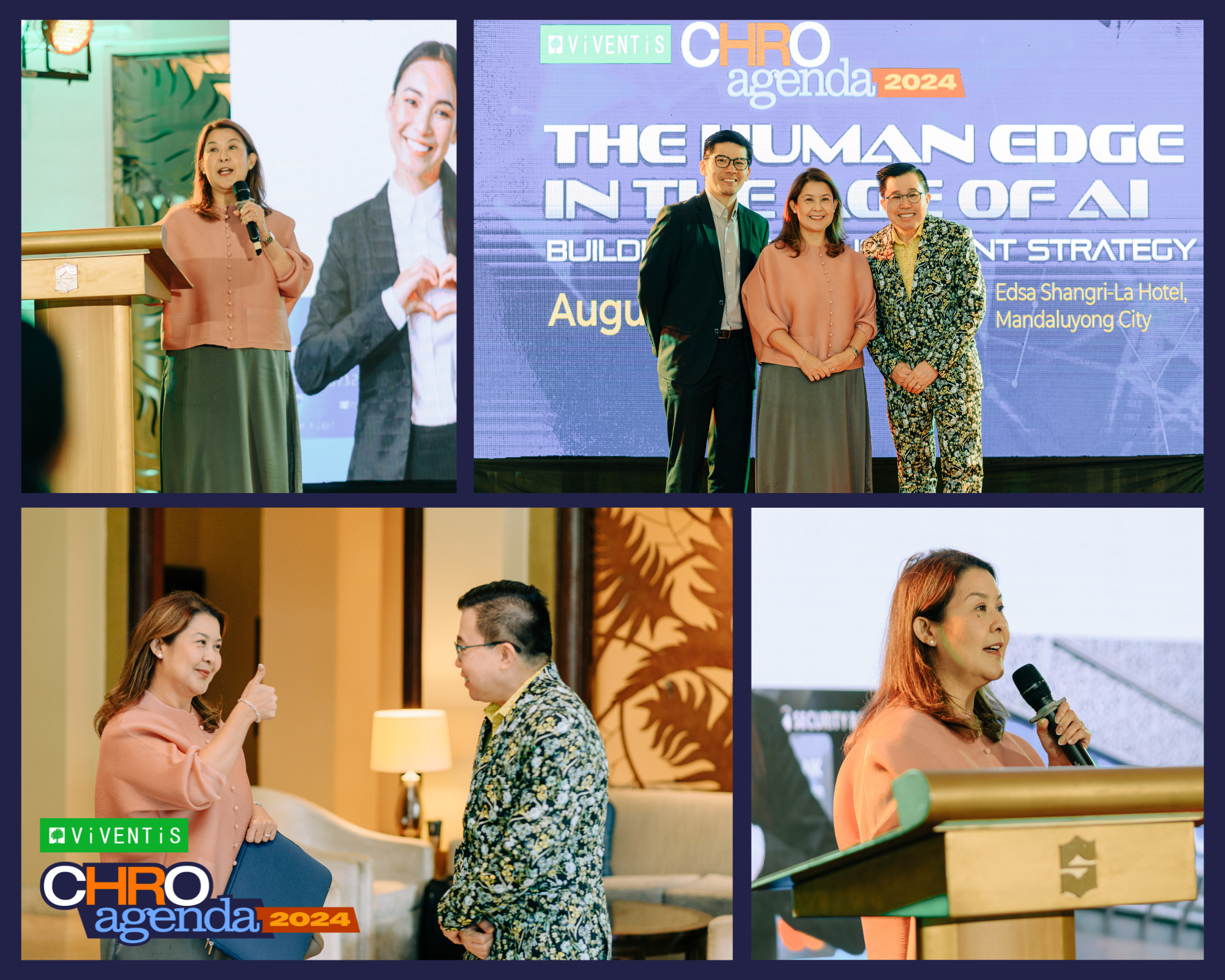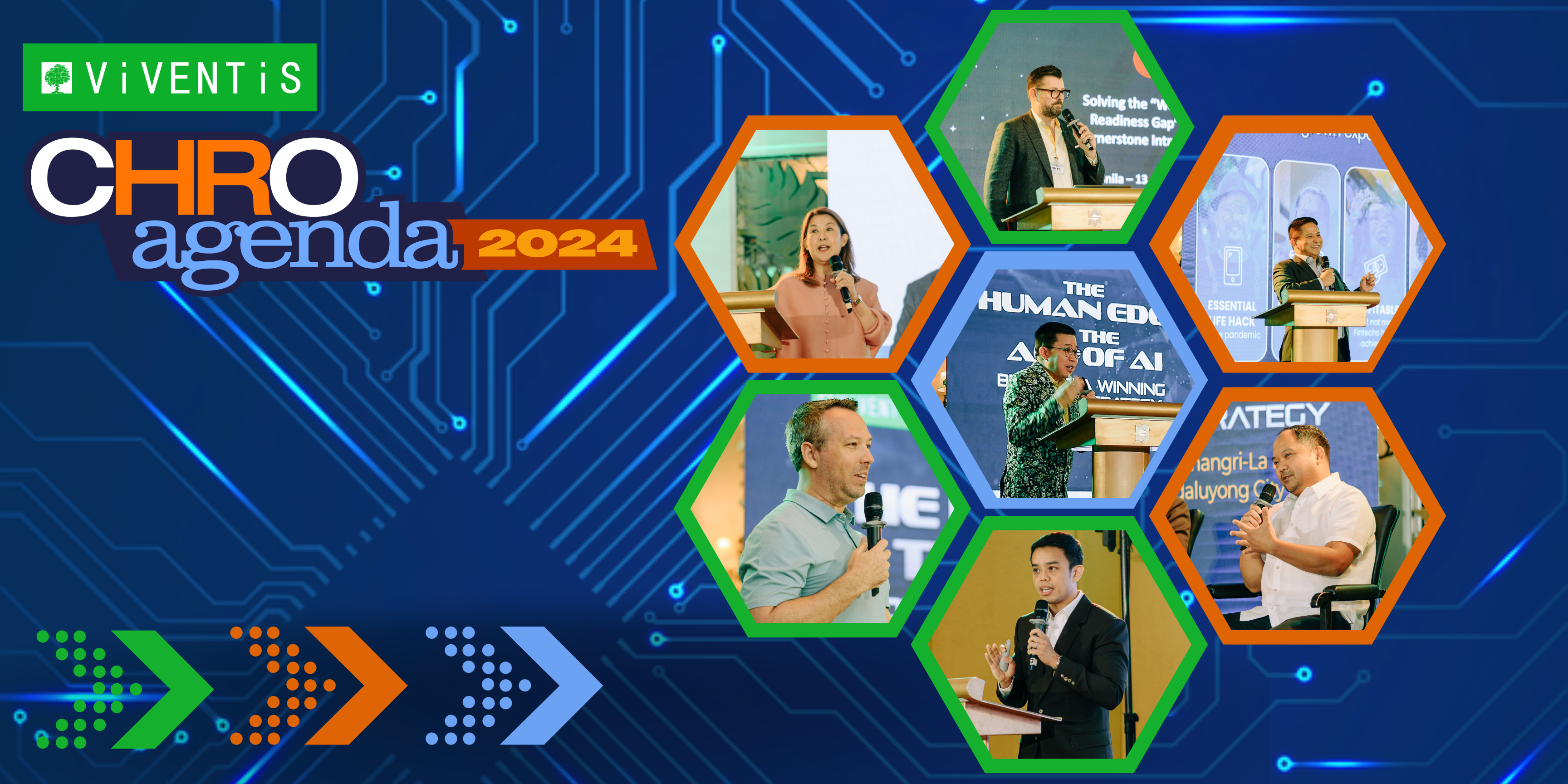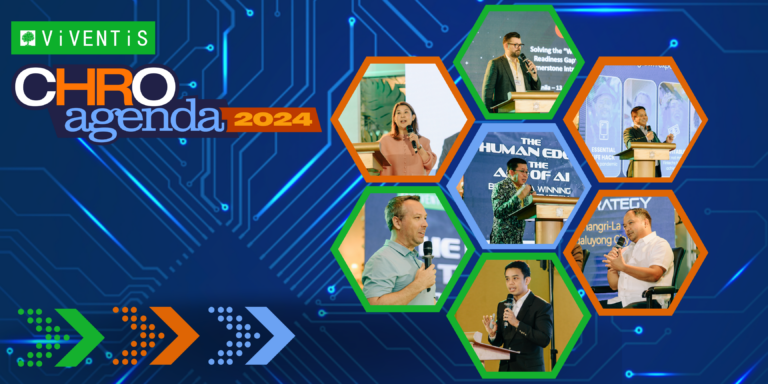The concept of “future-ready talent” refers to individuals equipped with the skills, adaptability, and mindset necessary to thrive in a rapidly changing work environment. This has become essential for businesses facing technological advancements, globalization, and shifting work models.
In order to stay competitive, companies must prioritize skills development to ensure employees can meet new challenges and embrace emerging technologies.

A key to building a future-ready workforce is aligning talent development with business strategy. Organizations should:
- Understand future business goals.
- Identify required skills and competencies.
- Develop talent strategies that bridge current capabilities with future needs.
Organizations can ensure business longevity by integrating HR in strategic planning and consistently assessing workforce needs.
Building a Future-Ready Total Talent Strategy
At the recent CHRO 2024 Agenda: The Human Edge in the Age of AI, Nerissa Berba, Executive Vice President and Chief People Officer of Security Bank, delivered an insightful presentation on Building a Future-Ready Total Talent Strategy.
She began by sharing the remarkable journey of Security Bank, highlighting the organization’s commitment to people-centric initiatives that have driven its continuous success and garnered numerous accolades over the years.

The HeART of Transformation
As AI and advanced technology in general revolutionize the business landscape, Nerissa Berba shared how they successfully navigated these changes by investing in the following four key areas:
Security Bank’s success is built upon a foundation of three pillars: talent, technology, and risk management. The bank prioritizes developing a future-ready and highly engaged workforce, recognizing that human capital is essential for driving innovation. Simultaneously, they have invested heavily in operational efficiencies and cloud-based technologies to maintain a competitive edge in the digital age.
Moreover, Security Bank fosters a culture of governance that balances innovation with security, protecting both its employees and customers through proactive risk management.
Security Bank’s HR Operating Model: A Streamlined Approach
Security Bank has recently implemented a comprehensive HR operating model to streamline its human resources operations. This model focuses on improving efficiency, enhancing employee experience, and aligning HR initiatives with business objectives. Key components of the model include specialized HR teams, a clear framework for HR operations, and a focus on efficient service delivery.
The organization aims that through adopting this approach, it will be able to optimize its talent management practices and create a more supportive work environment for its employees.
Putting People First
The industry leader also shed light on Security Bank’s Employee Value Proposition (EVP), which places people at the center and heart of their strategy. She emphasized that by nurturing their workforce through empathy, teamwork, and commitment, the organization was able to ensure its continued success in the face of evolving business challenges.
Nerissa Berba’s presentation at the CHRO 2024 agenda offered so many valuable insights into building a future-ready total talent strategy. Her key takeaways, centered around creating the right HR operating model, choosing and utilizing the right technology, and nurturing strong partnerships, provide a comprehensive framework for organizations seeking to navigate the complexities of the modern workplace and what’s to come in the not-so distant future.
Implementing these strategies empowers businesses to effectively manage their talent, boost innovation, and position themselves for long-term success.
Final Thoughts
As we look toward the future, one thing remains clear: the success of any organization hinges on its ability to adapt, innovate, and invest in its people. Businesses can benefit from a future-ready total talent strategy by preparing their employees for future challenges and ensuring their success in a rapidly changing environment.
The key is not just in adopting new technologies but in fostering a culture where human potential and strategic foresight work hand in hand, shaping the future of work and creating lasting impact. At the heart of every strategy and endeavor, human potential must always be valued, well-compensated, and appreciated. Creating a healthy and progressive work environment is also essential, where employees feel empowered, respected, and rewarded for their contributions.
Only then can organizations truly thrive.



